Turnianský Hrad, or Turňa Castle, is a landmark situated on the hill in a small village Turňa nad Bodvou, Eastern Slovakia. The place lies around 31 kilometers from Košice, the second-largest city. Some notable natural formations are within its proximity. The castle and the village are part of the Slovak Karst National Park.
How to reach Turňa Castle
The easiest way is to use a car and the parking lot under the castle in front of the Restaurant Pod Hradom. For those who want to use public transport, take a direct train from Košice to Turňa N. Bodvou (30 30-minute up to one-hour ride). Or take the train or bus and come to Moldava N. Bodvou, where you can get on a bus or train to Turňa N. Bodvou (1 hour journey).
When you reach the parking lot in front of the restaurant, follow the signs up the hill. The road starts in quite a good condition, but the steeper it gets, the less it looks like a road or pavement. The end part is full of rocks and can be challenging.
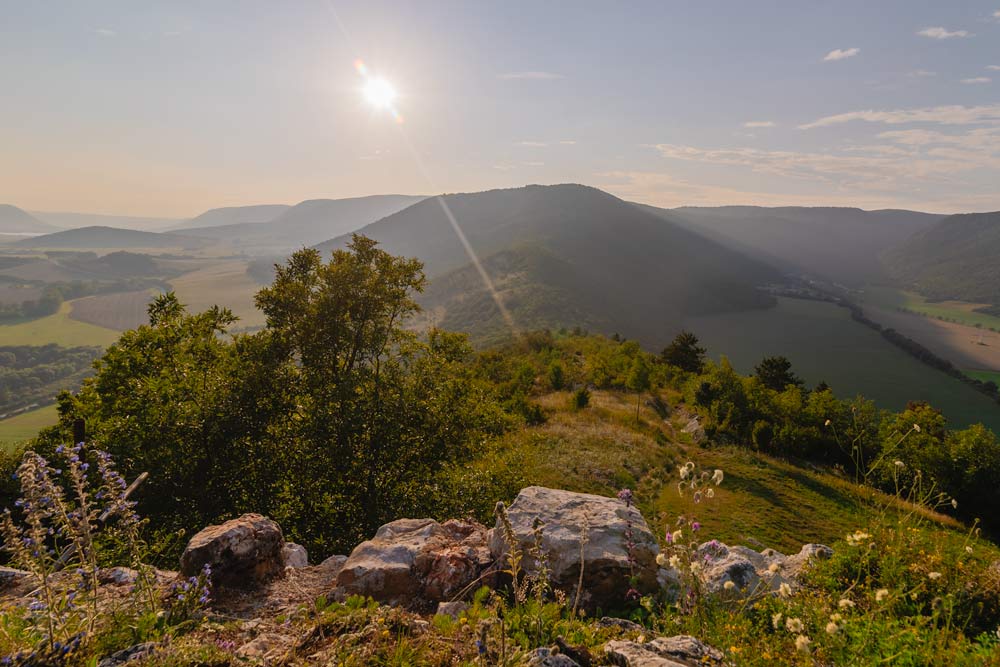
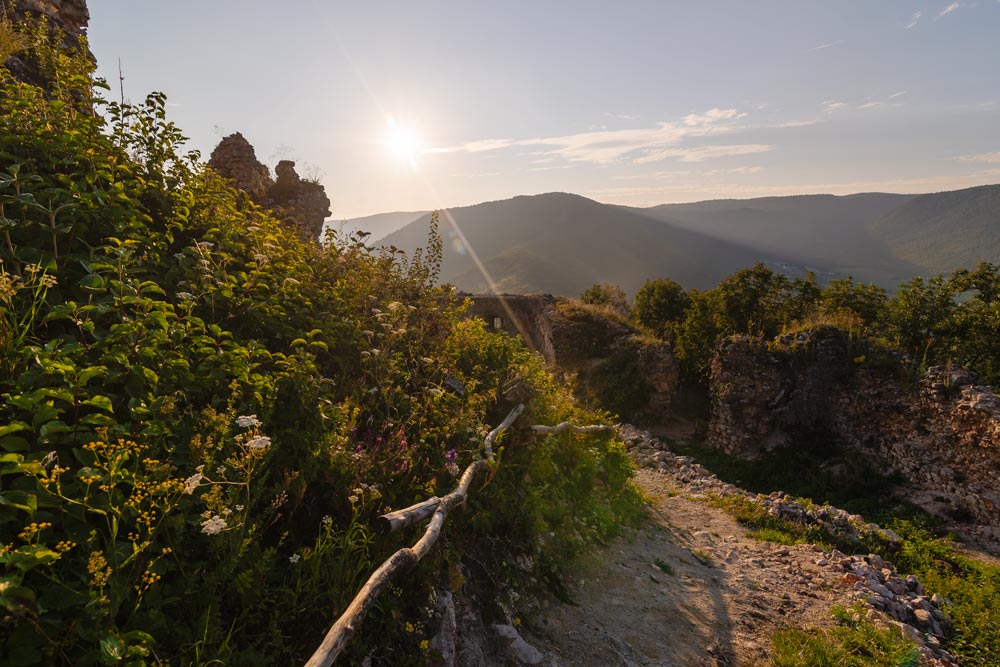
History of Turnianský Hrad
The history of Turnianský Hrad dates back to the 14th century. There were two dynasties of the Tornaiov family who lived in the castle. The first one died in 1406, and the second one in 1476. The next dynasty of Bebekovci family was probably responsible for building the palace and castle walls.
Some more families were living in it, but some changes happened when Hungarians rose against the Habsburgs. Leopold I. Habsburg ordered the demolition of the castle because the owners of Turňa village were fighting on the side of the Hungarians.
In 1685, Imperial General Schulz carried out the order to blow up the castle using gunpowder, leaving its walls in ruins ever since. In 2015, people founded the civic association Castrum Thorna, working alongside the village of Turňa nad Bodvou to preserve this cultural monument.
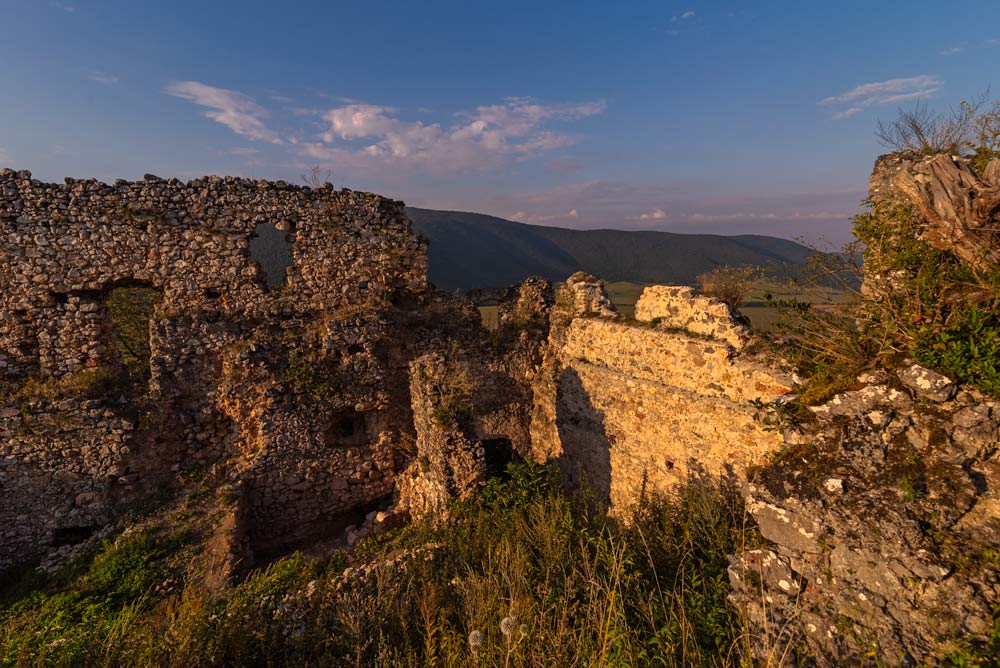
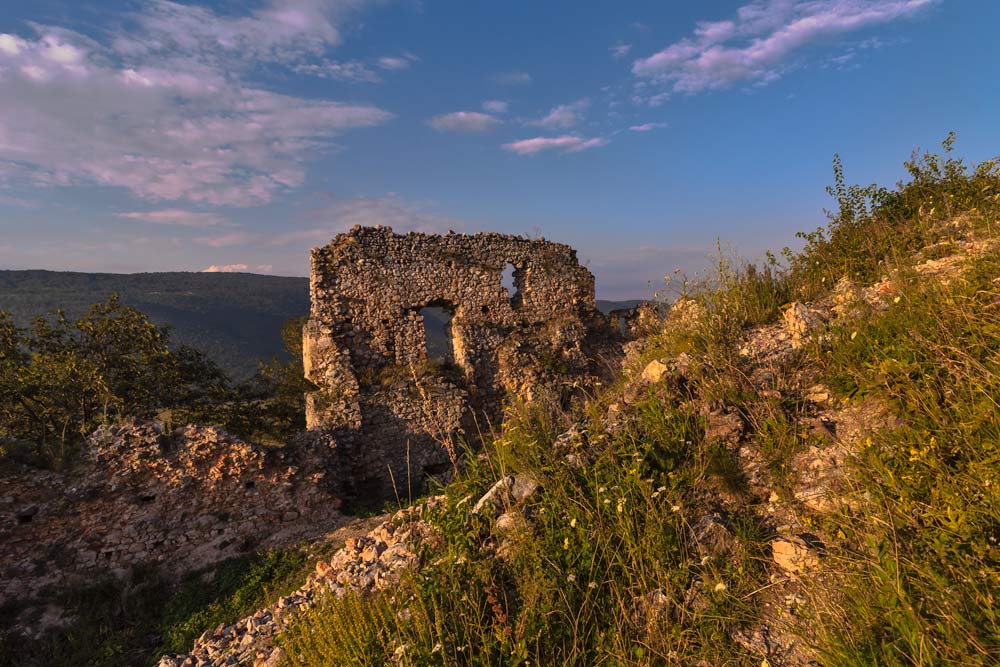

Local Legend
The local legend says that when the Bebek family lived in the Turnianský Hrad castle, they had two sisters. Kristína was very proud and cruel, while her younger sister Katarína was very kind and humble.
One day, the son of the Szádvár family castle came for a visit. He (Koloman Dessewffy) wanted to ask the younger and beautiful Katarína if she would love to become his wife. Her sister was also interested in becoming his wife, but he refused her advances.
It resulted in her creating a very nasty and cruel plan to murder him. One evening, when the lovers were chilling on the rock, she came closer and hit Koloman with a dagger in his back. Then, she blamed her sister for the hideous deed.
The palatine from Buda ordered a trial of guilt by the dead body. Everyone had to take the murder dagger in hand, and if blood started to drip from it, they were deemed the murderer. Katarína was proven innocent. In the end, Kristína took the dagger, and blood began to drip from it. Once the people discovered who is the murderer, Kristína cursed Turňa and stabbed herself in the heart.
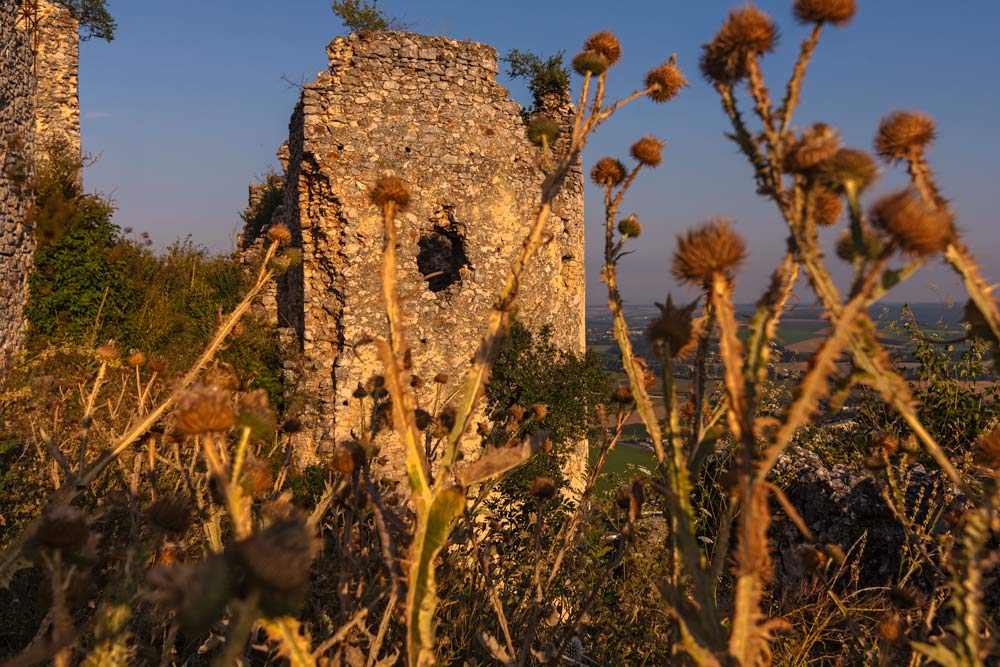
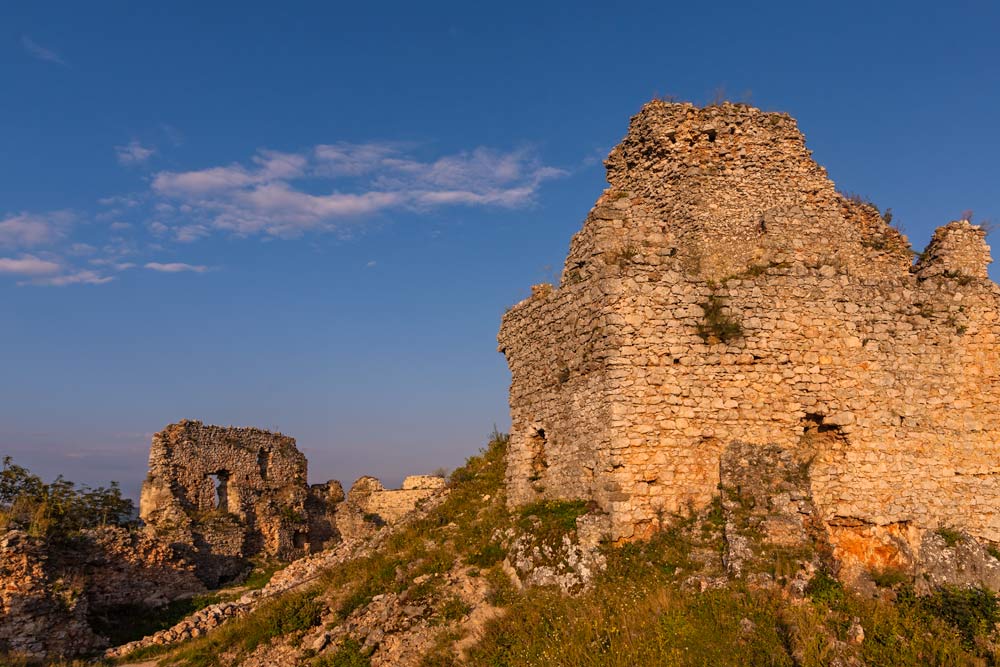

The Pond
The Pond lies near the parking lot under the Turnianský Hrad. People built it in the 60th of the 20th century. It lies right next to the road that connects Rožňava and Košice. The place is part of the natural reserve and is ideal for birdwatching. It is not possible to swim inside it. There is one abandoned building with many graffiti on its walls.
A diverse range of birds nest here, including herons, marsh harriers, bitterns, reed warblers, and the protected ferruginous duck.
The habitat is perfect for amphibians, mammals, insects, and reptiles, with species like the tessellated snake (*Natrix tessellata*) and grass snake (*Natrix natrix*) commonly found.
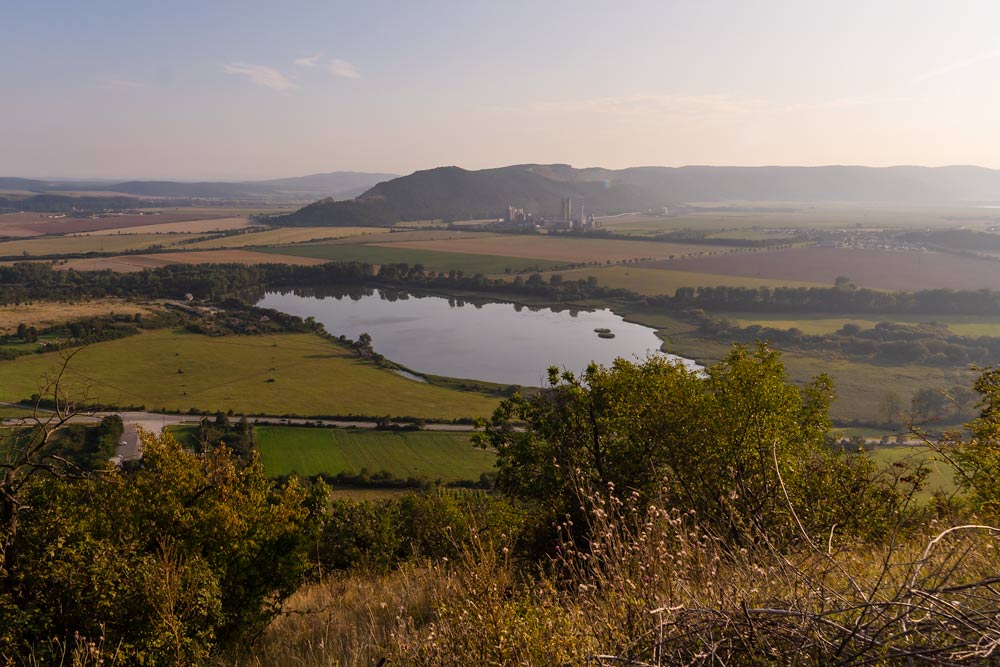
Monument Pamätník Československých legionárov
If you take a short walk from the Pond to the Turňa nad Bodvou, you will cross the Jewish cemetery, old Catholic cemetery, and the Pamätník Československých legionárov monument. But be aware that the grass can be tall in the summer. It can make reaching the place a little bit harder. Or at least this happened to me. I didn’t have enough time to search for the monument to see it from a closer distance.
In 1924, the memorial was erected on a hill north of the village to honor 23 Czechoslovak legionaries who died in 1919 defending Czechoslovakia from Hungarian attacks. In 1938 the monument was removed. This happened after Turňa nad Bodvou was annexed by Hungary. It was restored in 2000 by the Czech Society in Slovakia.
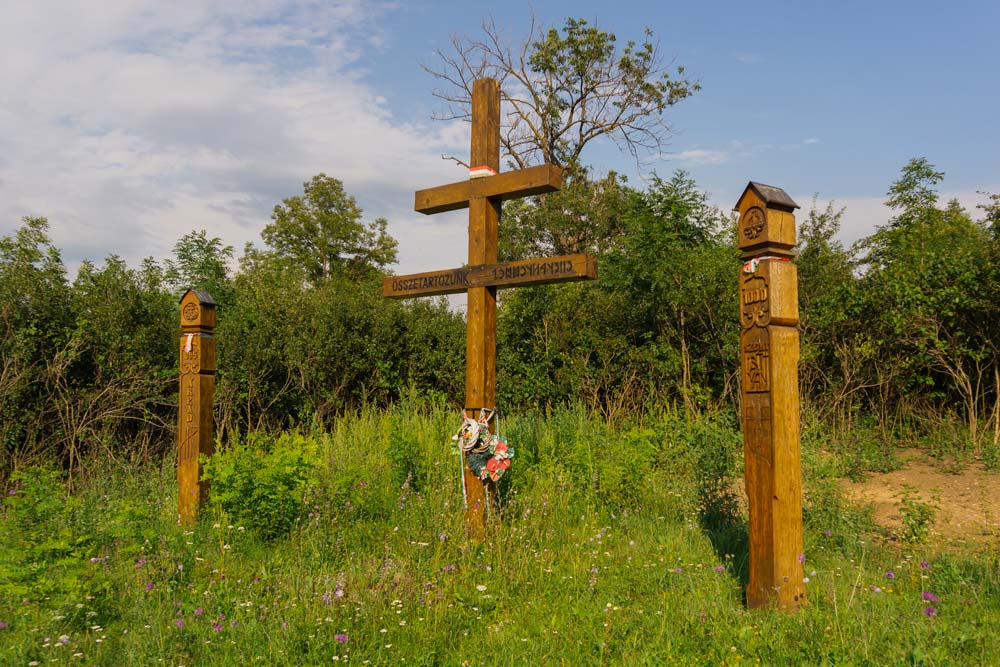
Turňa nad Bodvou village
Gothic church
Besides the nearby cemeteries and memorials, you can also visit the local roman catholic Gothic church Nanebovzatia Panny Márie. It is typically open during mass times. Either early in the morning or around 6 PM. I didn’t go inside (I came too early). It has a defensive stone wall. It looks more lively from a distance with all the surrounding grass.
This Gothic church dates back to the late 13th to early 14th century. It features a polygonal apse and a prominent tower. The church stands on the edge of the village. Originally devoted to St. Giles, the church had its rectangular sanctuary replaced before 1406, and its interior decorated with notable frescoes.
It was Protestant in the 16th century and received ornate decoration in the 18th century. Renovated in 1889 and 1930, it had medieval frescoes restored in 2014.
The church features Hungarian frescoes. Mór Jókai rediscovered them in 1880. Now in poor condition. It has late 19th-century furnishings, a baroque painting of St. Paul, and a Gothic bell from the 14th century. Notable for its Gothic architecture, it also has colorful windows depicting St. Elizabeth and St. Stephen.
Right before you enter the church stands a small chapel dedicated to St. Florián.
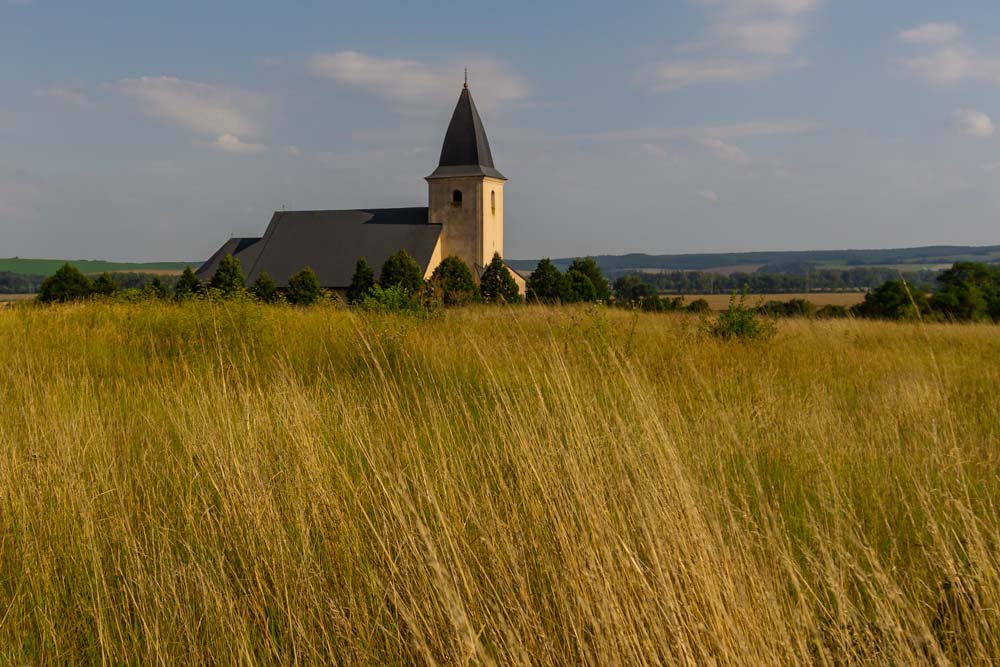
Manor House
Manor House, renaissance-style architecture, is from the 17th century. It is still preserved and shaped in L with two chapels. According to local tradition, only servants lived there. The real one was near the Pond. František II. Rákoczi used to live there for a short period in 1711.
County House
The County House is from 1820. It is a two-story Neoclassical building with original wrought iron grilles on the windows. The principal archway has slender columns. They are statues of seated women on them. After the merger of the Abov and Turnianska counties in 1881, the building served various practical purposes. It is now vacant and looking for a new use. Currently, the former county house is in poor condition.
Accommodation and shops
If you plan to stay longer and need accommodation, the Restaurant Pod Hradom offers lodging options. Just across the street is the Guest House Réva, which is slightly more expensive but also a good choice. Additionally, you will find a grocery store on Moldavská street. It is open daily until 7 PM during the week and until noon or 1 PM on weekends.
What to visit nearby
Nearby Turňa Castle, you can explore several attractions. The Háj Waterfalls and the stunning Zadielska Dolina are perfect for nature lovers. The nearby village of Hačava offers a charming local experience. To the west, in the municipality of Lúčka, you can visit the well-preserved ruins of a medieval Hussite church.

Sources:
turnanadbodvou.sk
slovensky-kras.eu